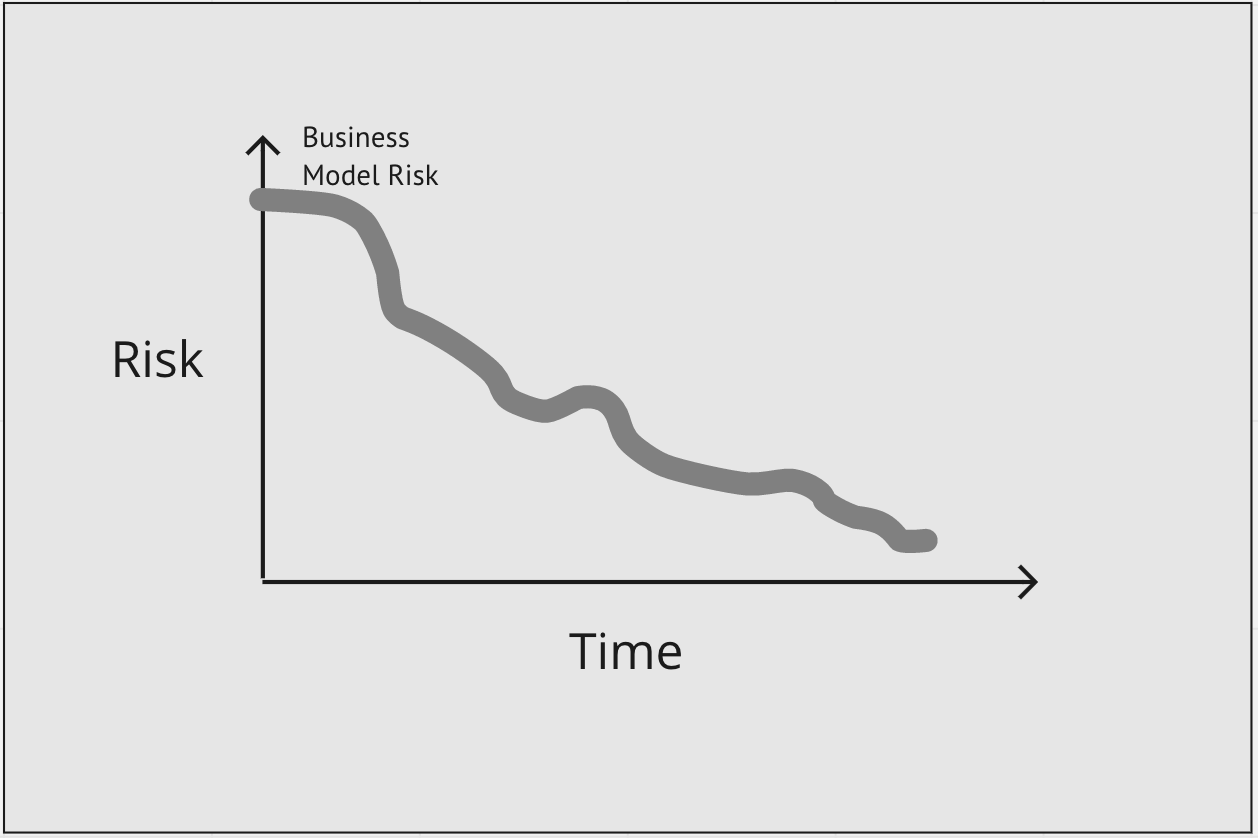PF #61: Business Model vs. Established Enterprise Risk
Product Market Fit does not make your risks disappear
Thanks for subscribing to my newsletter. If you are getting value please share the ❤️.
Steve Blank says “Your startup is essentially an organization built to search for a repeatable and scalable business model.” (ref)
Having been working with startups for most of my career, I really love this definition. It encapsulates that nature of discovery and volatility that inhabits the life of a startup.
Key activities in building out this business model include defining who your customers and users are, what problems they have, and providing them a solution they are willing to pay for over competitive alternatives.
There are many risks that a startup faces in finding product-market fit for their first product but it doesn’t end there. If you have the perfect product but a lousy market your business will fail. If you have a great product and market but a key competitor introduces a better, lower cost alternative, the rug will be pulled out from under you.
In one startup I am working with, the business model hinges on key data supplier relationships. What happens if they don’t materialize?
So much risk in startups. So much fun for the mildly masochistic.
When things go well, over time the team reduces the risk in discovering this business model. The product comes together, the market takes shape, partners come calling, and customers want more.
One would think that this makes it easier to make decisions. Less risk. You’ve crossed the chasm after all.
However, there is another set of risks that grow just as your business model risk succumbs to relentless attack.
The growing risks are those of the Established Enterprise. While you are building your startup these seem like the nice problems to have. Once you have them, you start to reminisce about the past.
Here are just some of the nice-to-have problems you can look forward to.
Existing Customers - The biggest risk to established enterprises is messing up relationships with your existing customers. These customers pay your bills and don’t want to be surprised. They want you to keep investing in things of value to them. You need these customers to remain happy to get references and drive those easy expansion sales. How can you innovate if you are stuck keeping existing customers happy?
Technical and Design Debt - Technology has a way of getting long in the tooth. Over time, solutions from 5-10 years back are no longer the best way to build solutions today. Refactoring, re-engineering, or building an entirely new solution is really difficult because that introduces risk to your steady and reasonably forecastable business model. Not to mention that such an investment is very difficult to progress relative to some incremental patch-work.
Competitor Blind Spots - As you grow and gain success, you tend to focus on fewer key competitors in a maturing market. This is because you are on on the short list that Gartner recommends to their advisory clients and you consistently go head to head in big opportunities. But the story of successful companies losing their mojo is usually from new startups exploiting an underserved niche in your market.
Underserved Niche - Speaking of the niche problems. Usually these are not big enough for your successful business to invest in. Yet, this is probably the exact same type of “mini” market you got your initial start in before maturing your business and market.
If we look at the aggregate picture of Business Model Risk decreasing while Established Enterprise risk grows we have a picture like the following.
There is a definite period of time when you still have not removed the startup risks but the established enterprise risks are growing rapidly. This is a no mans land of risk management.
Managing these types of risk takes different management skills. Moreover, when you identify you are in this cross-over range, you need to be careful not to over emphasize one or the other.
Take customer risk. As a startup still finding its business model, you will likely have many multiples of your existing customer base ahead of you. If you start working too hard to drive satisfaction to all existing customers you may miss the opportunity to find the future growth necessary to survive long-term. What this means is that you need to be very intentional about how you invest in existing customers, being sure to concentrate on just the right customer segments.
Risks never diminish entirely. They just transform as your startup matures.





